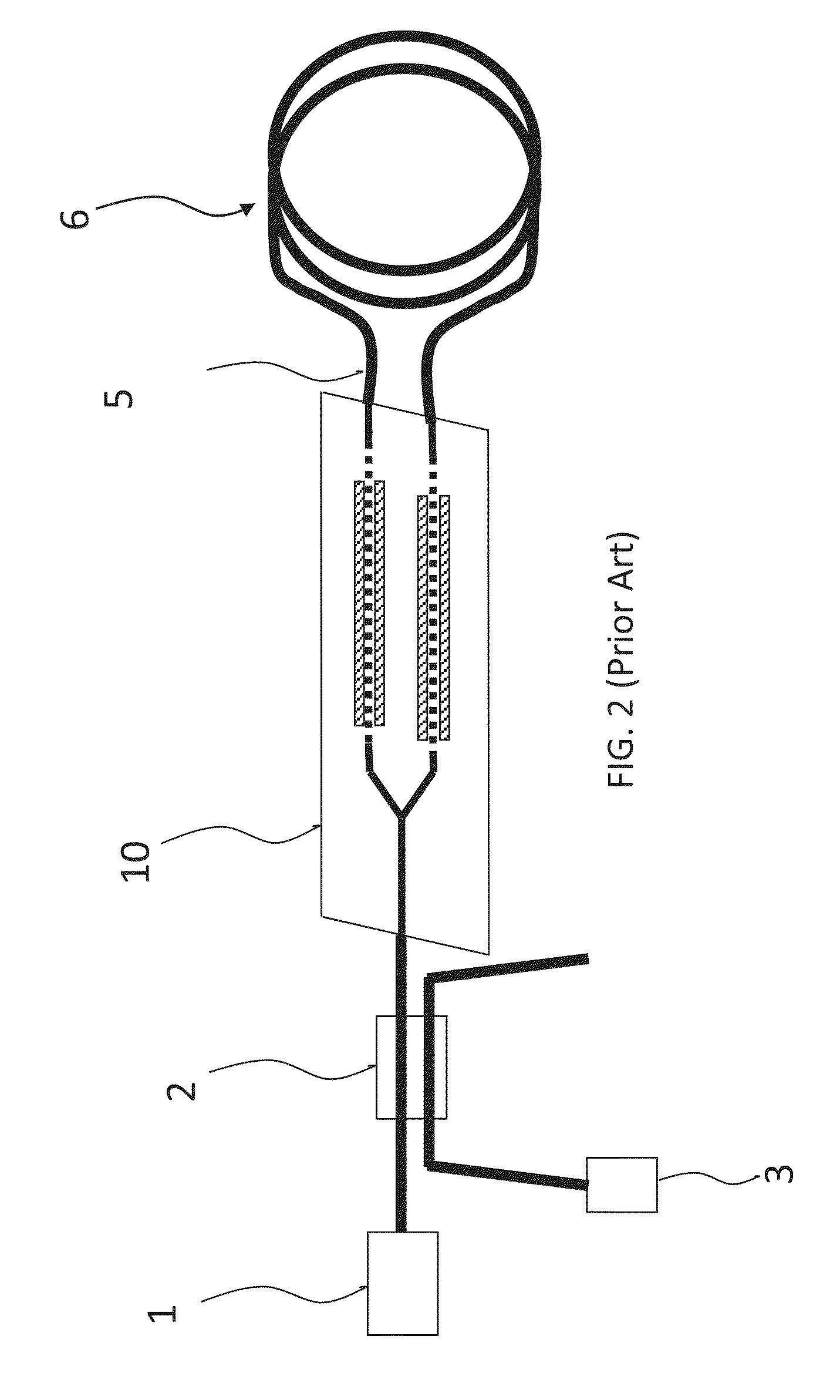Y-branch dual optical phase modulator
a dual optical phase, y-branch technology, applied in non-linear optics, instruments, optics, etc., can solve the problems of non-flat step response, unstable eo characteristic of ape waveguide exposed to vacuum, etc., to reduce the non-uniformity of electrical resistivity of the substrate lateral
- Summary
- Abstract
- Description
- Claims
- Application Information
AI Technical Summary
Benefits of technology
Problems solved by technology
Method used
Image
Examples
Embodiment Construction
[0050]In the context of this specification, the terms ‘disposed on / upon’, ‘located on / upon’ and their equivalents are used to indicate relative position of two elements and encompass situations wherein two elements are in a direct physical contact or have one or more additional elements between them. The term “disposed directly on / upon” means herein that the two elements are in a direct physical contact. The term ‘low frequency’ with reference to an EO frequency response or modulation efficiency means herein frequencies from about 1 Hz down to 0.00001 Hz or less, unless stated otherwise. The term ‘low-frequency application’ is used herein to mean applications wherein the device is modulated at frequencies generally below about 1 MHz and including frequencies in the range from about 1 Hz down to 0.00001 Hz or less, unless stated otherwise.
[0051]Prior to providing a detailed description of exemplary embodiments, we first describe some drawbacks of prior art YBDPM devices, in particula...
PUM
| Property | Measurement | Unit |
|---|---|---|
| modulation frequencies | aaaaa | aaaaa |
| distance | aaaaa | aaaaa |
| width | aaaaa | aaaaa |
Abstract
Description
Claims
Application Information
 Login to View More
Login to View More - R&D
- Intellectual Property
- Life Sciences
- Materials
- Tech Scout
- Unparalleled Data Quality
- Higher Quality Content
- 60% Fewer Hallucinations
Browse by: Latest US Patents, China's latest patents, Technical Efficacy Thesaurus, Application Domain, Technology Topic, Popular Technical Reports.
© 2025 PatSnap. All rights reserved.Legal|Privacy policy|Modern Slavery Act Transparency Statement|Sitemap|About US| Contact US: help@patsnap.com



